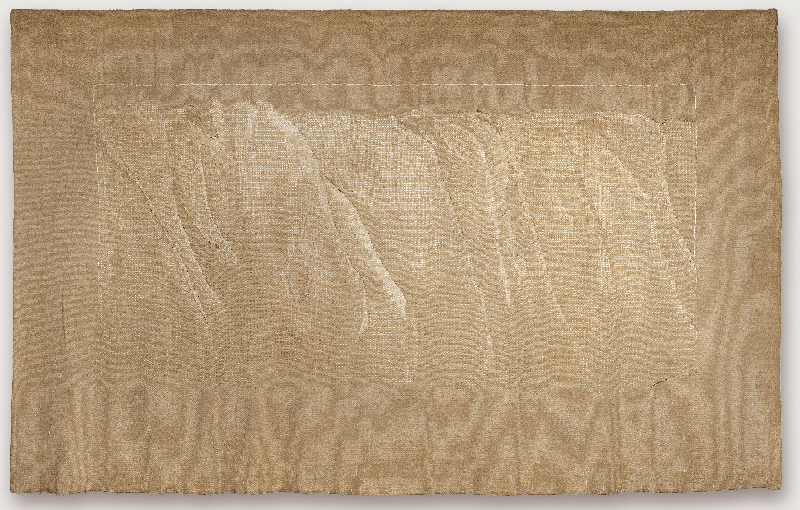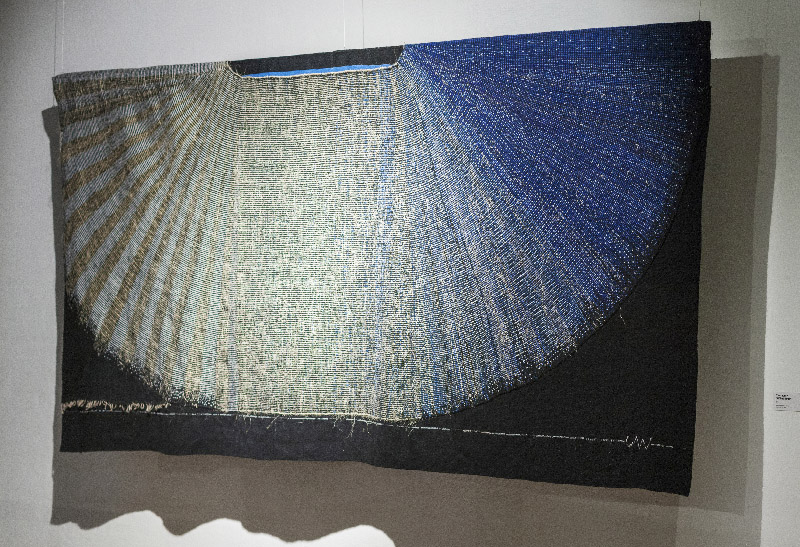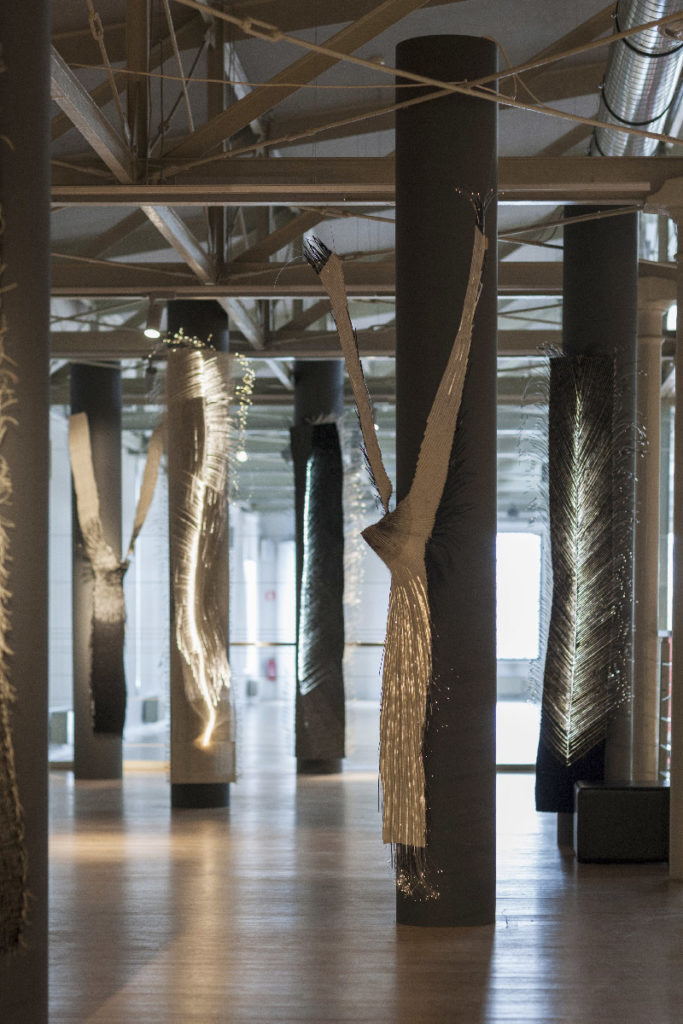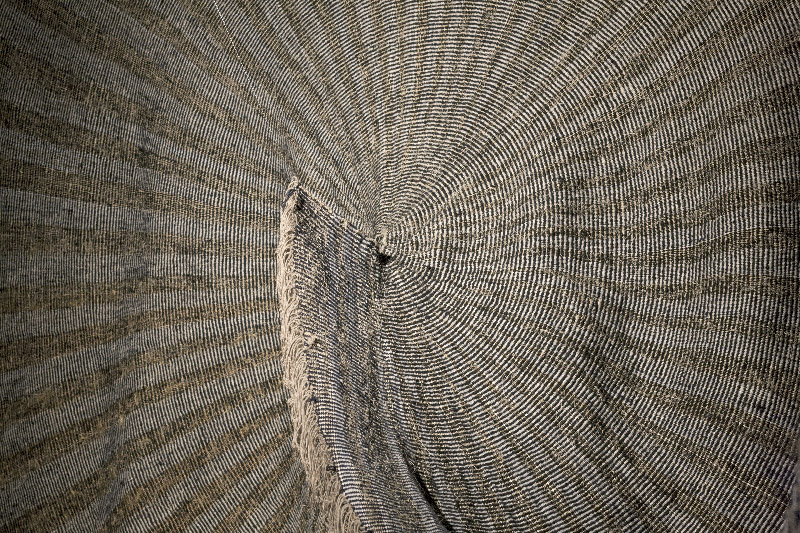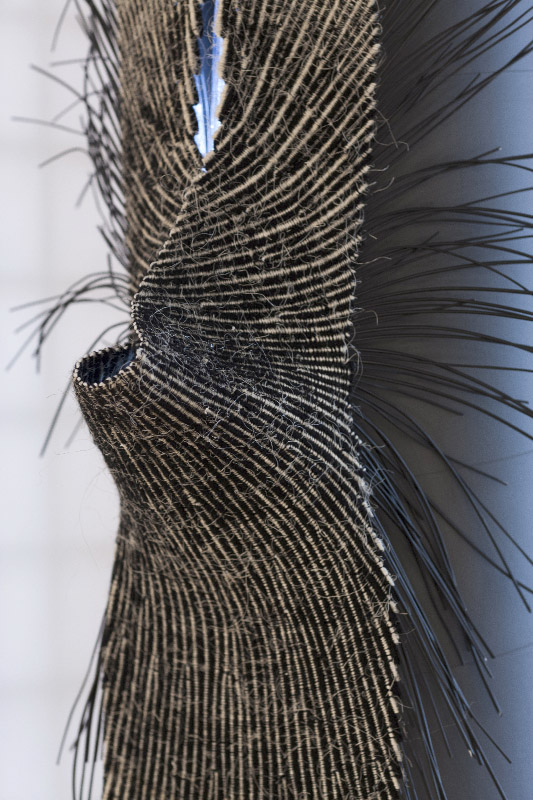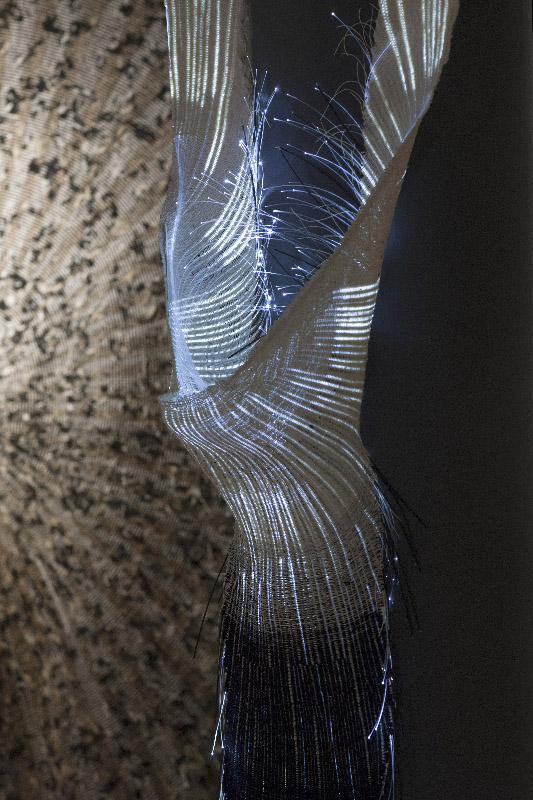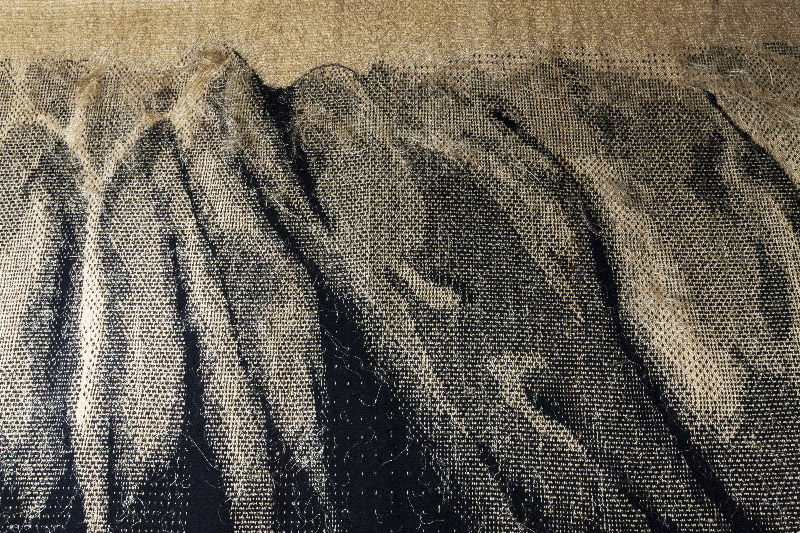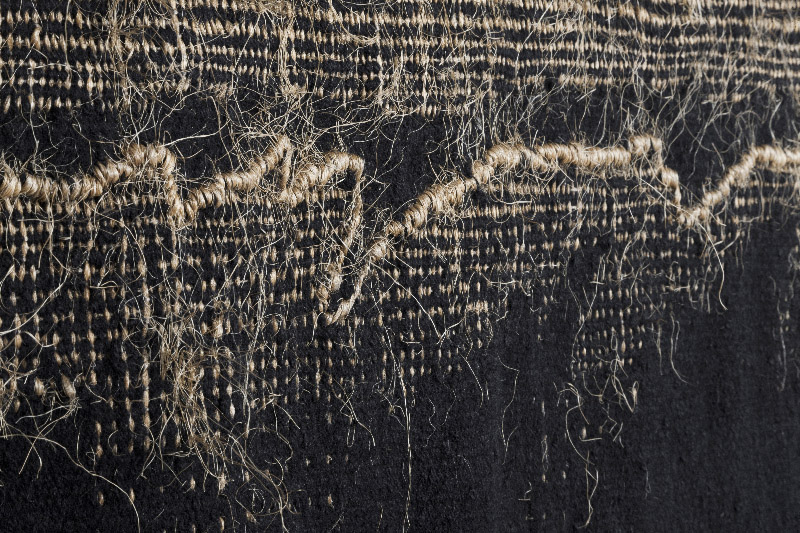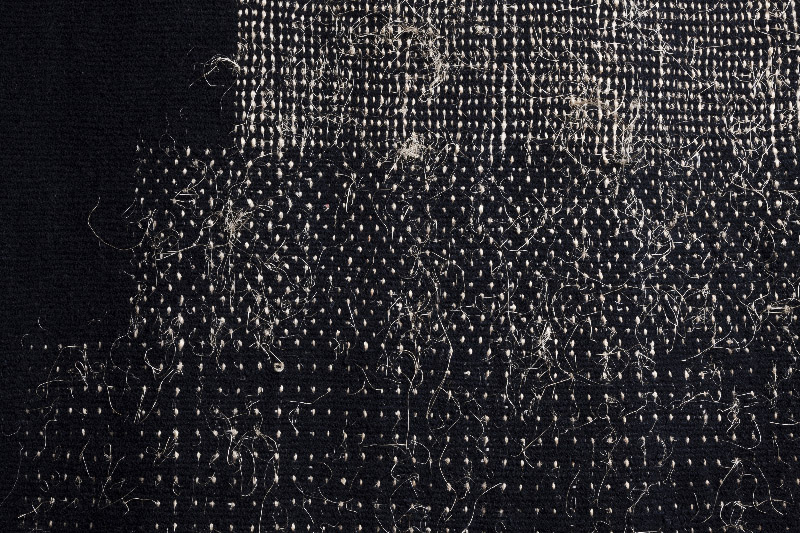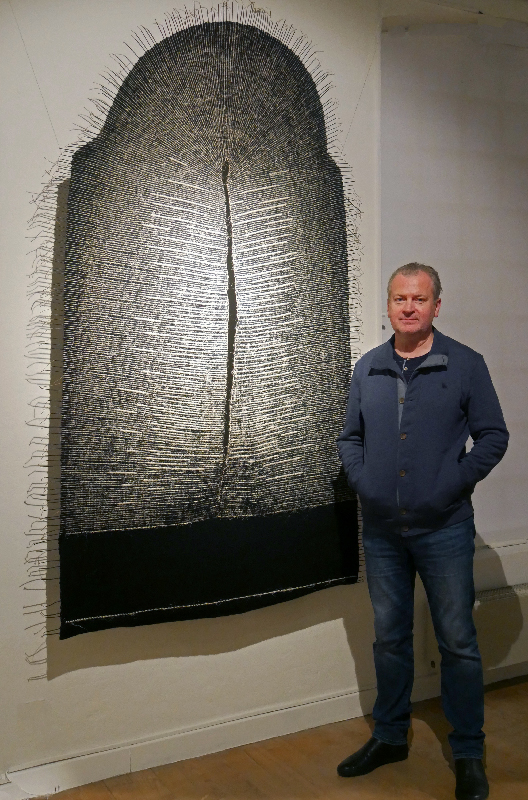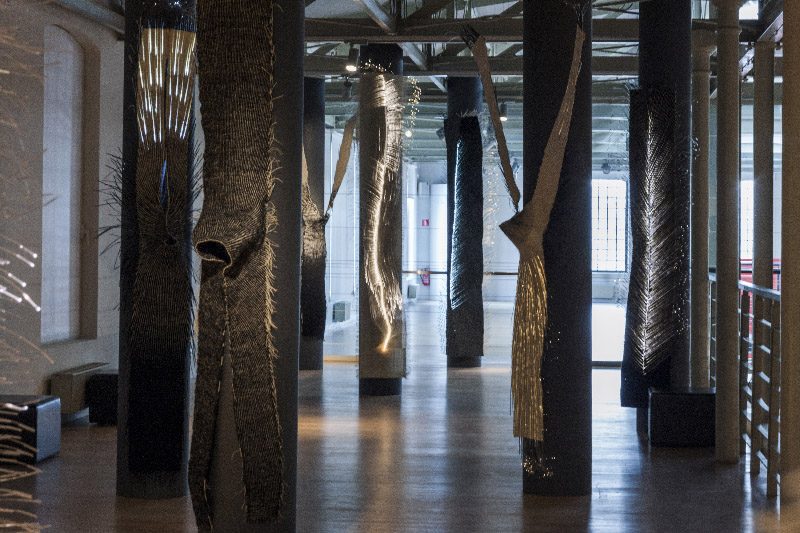
The exhibition “Wlodzimierz Cygan – Ad Initium (Towards the Beginning)” will take place at the Central Museum of Textiles, Łódź, from 14th December to 25th March 2018. It continues the museum’s exhibition series on the most important Polish textile artists who enjoy recognition both at home and abroad.
This exhibition of Cygan’s work – held simultaneously and in the same rooms of the textile museum as the show on Magdalena Abakanowicz – distinguishes Cygan as a very special artist. He belongs to the second generation whose teachers, in their day, sparked a textile revolution. In his case, they were Janina Tworek-Pierzgalska and Antoni Starczewski who are both featured in a concurrent exhibition, “Rebellion of the Matter” at the same museum. I was amazed by the extent to which their influences can still be seen in Cygan’s work today: the sweeping, playful black-and-white lines of Tworek-Pierzgalska’s tapestry as well as Starczewski‘s intellectual focus on essentials.
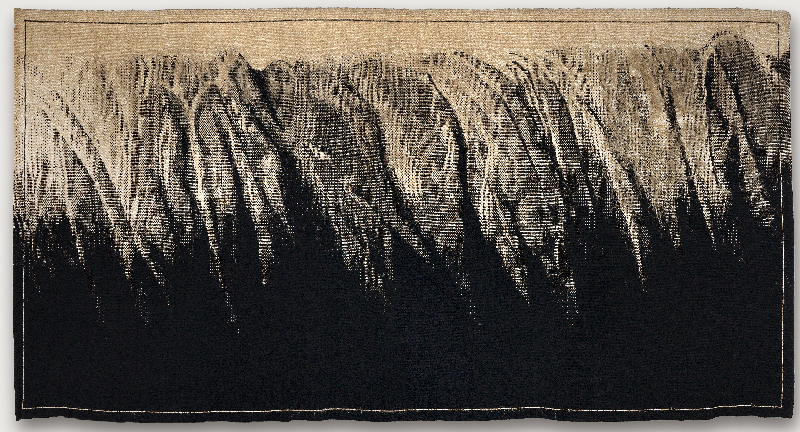
Although the second generation still wanted to experiment, they went back to the roots of weaving. For example, Andrzej Rajch designed a tapestry entitled “Three Graces” in which he used the flat tapestry weaving technique to create a three-dimensional visual effect; it is on display in the above-mentioned exhibition. Cygan wanted to go even further back to essentials – to the warp and weft as well as their points of intersection, which he intended to make visible. In “Scale of Grey” and “Where Am I Now“, he designed 13 scales of grey consisting of black and white dots, similar to what is done today in digital jacquard weaving but, at the time, without the assistance of a computer. His cartoon displayed something resembling isobaric lines of condensing and expanding shades of grey. Specially made for the 6th Lodz Triennial held in 1988, this monumental work was on display there and later purchased by the Textile Museum. A year later, in 1989, Cygan submitted the piece for the Lausanne Biennial where it was rejected. He then entered it for the 1989 International Kyoto Textile Exhibition, winning the prize awarded by the International Wool Secretariat.
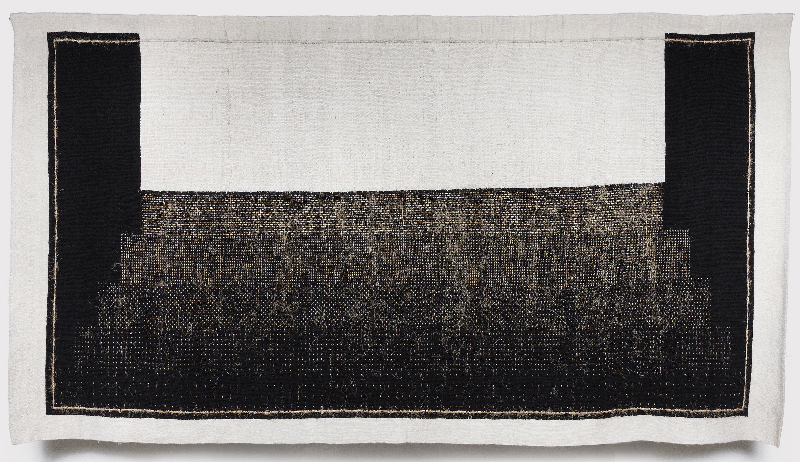
Another work in shades of grey, “One, Two and Higher” was created during a “pleinair” (artist meeting) entitled “Inspiration” held on the Baltic coast. The large format (145 x 300cm) could be produced on a comparatively small frame by cutting the warps individually so that they could be extended: the section already woven was stapled to the bottom of the frame, and the warps were reknotted.
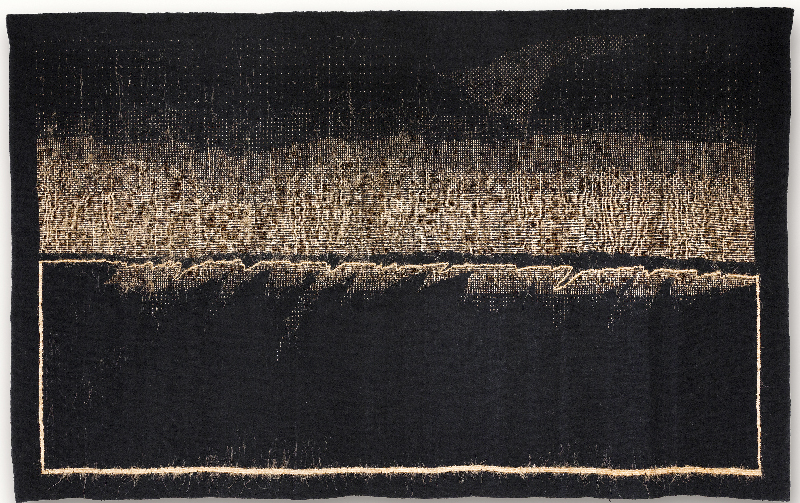
Another work in the series, “Eastwards” created in 1989, made reference to Japan. The austere and restrained nature of Cygan’s art meant it was logical that he should be attracted to this country. He visited Japan in 1989.
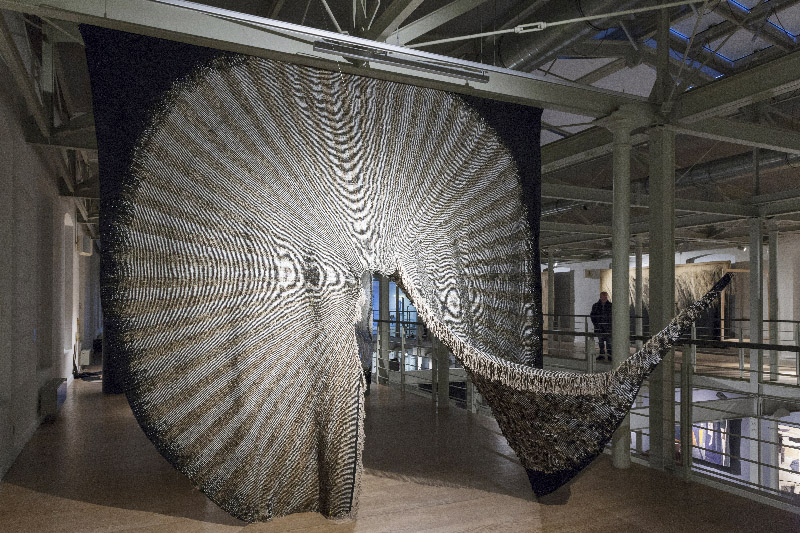
The next group of works highlighted the warps; in these pieces they take on a very particular role, stepping out of line and taking new directions. This can only be achieved on a frame that allows the warps to be repositioned and reknotted. In these tapestries, the main focus of the work shifts to the warps whereas the actual fabric is simple. The pieces are created in round shapes ranging up to a full circle, as seen in “1999” which was completed shortly before the Millennium. For me, the most impressive work from the series in the exhibition was “Two in One” – two sections combined into a single work by means of warp threads connecting them in a round arch shape. Both pieces were displayed at the Second Triennial of Textile Art held in Hangzhou in 2016.
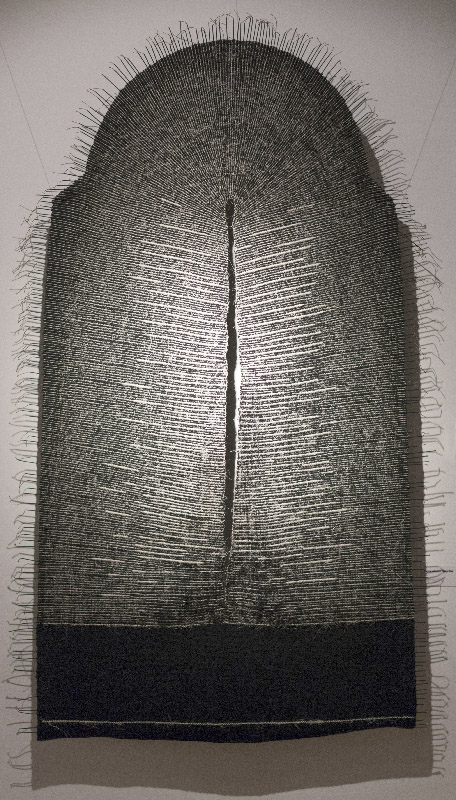
“Orbitrek”, a piece created in 2007, was described as highly important by Cygan himself, not least because it won him the prestigious Grand Prix at the 12th Lodz Triennial in 2007. Regrettably, it is not included in this show, but rather in the “Rebellion of the Matter” exhibition mentioned earlier.
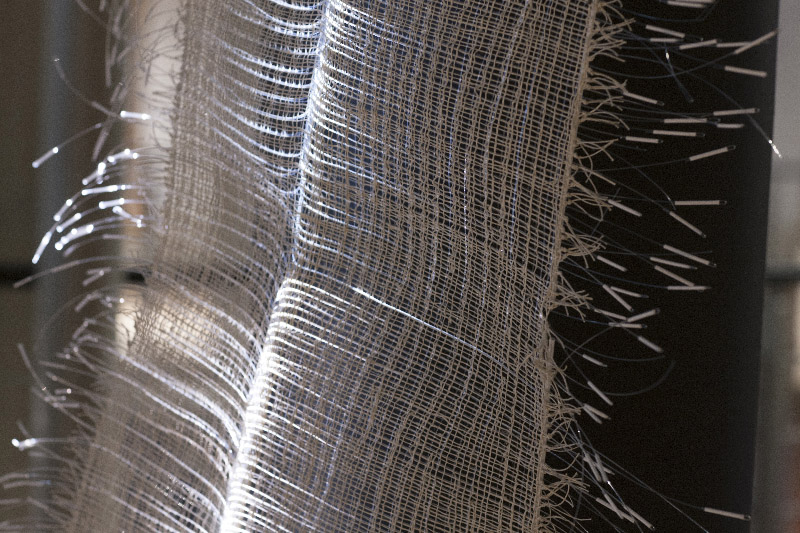
In 2004, during the 11th Lodz Triennial, Cygan met Danish artist Astrid Krogh who worked with optical fibres, an encounter that marked a major milestone in his development. She gave a lecture for Cygan’s students at the Lodz University of Technology and left behind material which was not available in Poland at the time. Cygan’s work entitled “Dear Astrid” is a thank you to the artist. He created several works using optical fibers, including “Framework” (2010) and “Fireworks” (2011) as well as the “Whys“and “Tapping” series.
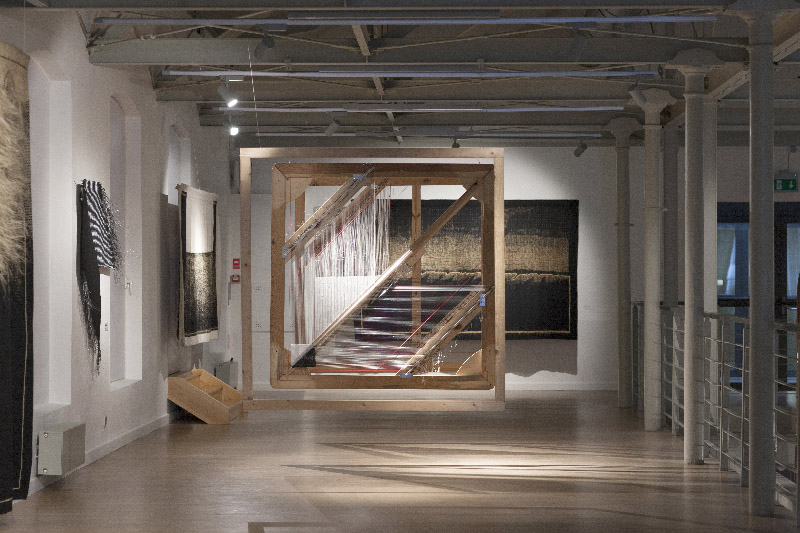
The exhibition also includes several frames showing works from the “Black Boxes” series which the artist is working on at the moment; curator Marta Kovalevska rightly felt that they would be instructive to the public. Unfortunately, however, it means that it is not possible to show the entire “Black Boxes” series which constitutes yet another new direction – a return from free shapes back to geometric forms. Wlodzimierz Cygan is still good for a surprise!
Włodzimierz Cygan not only works as an artist, but also as a professor at the Strzeminski Academy of Fine Art, Łódź, and Łódź University of Technology. He is also a well-known name abroad, such as the US where he has just acted as sole juror for World Tapestry Now, a show organised by the American Tapestry Alliance. http://www.cyganart.com
For further information on the exhibition please visit: http://www.muzeumwlokiennictwa.pl/wydarzenie/wybrane/ad-initium,56
